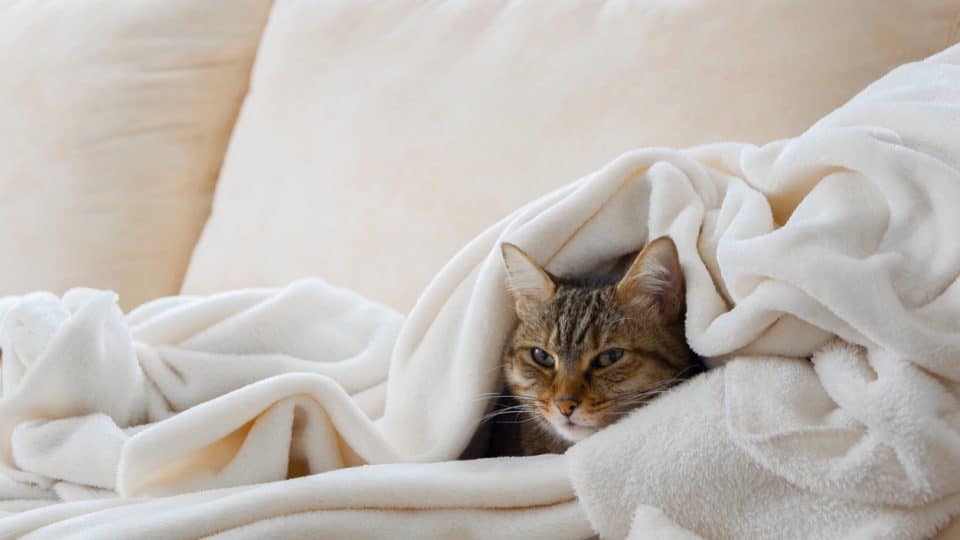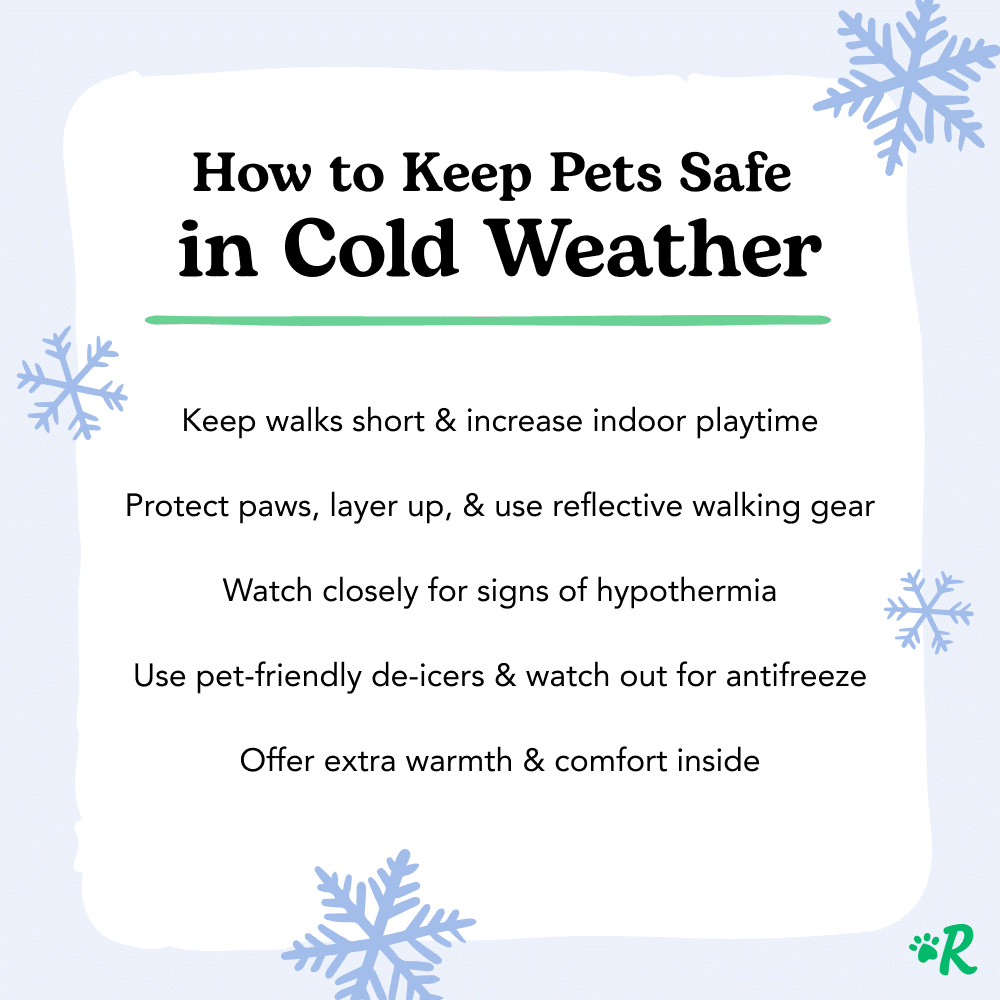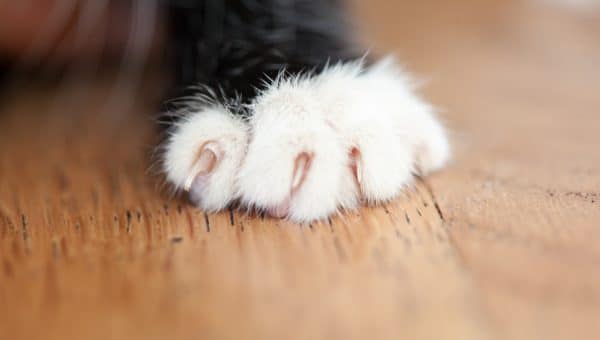Is your cat extra cuddly these days? As the mercury continues to drop, your cat will seek out reliable heat sources—including you! (Not that you’re complaining.) But when it comes to chilly winter temperatures, how cold is too cold for your cat?
A cat’s normal body temperature runs hotter than a human’s; it typically falls between 100.5–102.5° Fahrenheit. When a cat’s body temperature falls below normal, they may be at risk of hypothermia. Luckily, there are plenty of ways to help your cat maintain a comfortable body temperature, even in the coldest months. We’ll go over them below, along with other signs and symptoms of feline hypothermia.
Do Cats Get Cold?
Yes. Although they come with a built-in fur coat, and some cats are more tolerant of cold temperatures than others, cats can still get cold, just like people and other animals, explains Dr. Paige Adams, a veterinarian at Etowah Veterinary Hospital in Marietta, Georgia.
Adams explains a few additional factors that could affect your cat’s cold tolerance, including your cat’s:
- Age: Kittens seven weeks old or younger can’t regulate their body temperature well yet. Adams also adds that senior cats may also be more susceptible to the cold.
- Breed: Long-haired breeds, like the fluffy Maine Coon, are built to stay toasty in harsh snowy weather. Meanwhile, a hairless breed like Sphynx may need a sweater to keep warm, even while living indoors full-time.
- Weight: Thinner cats don’t have as much body fat to conserve warmth in frosty weather, Adams says. Whereas, a cat on the chunkier side may fare better.
- Activity level: Adams explains that exercise can raise your cat’s internal body temperature. So, a cat who spends their afternoon chasing feather wands may be warmer than one who spends the afternoon lounging around.
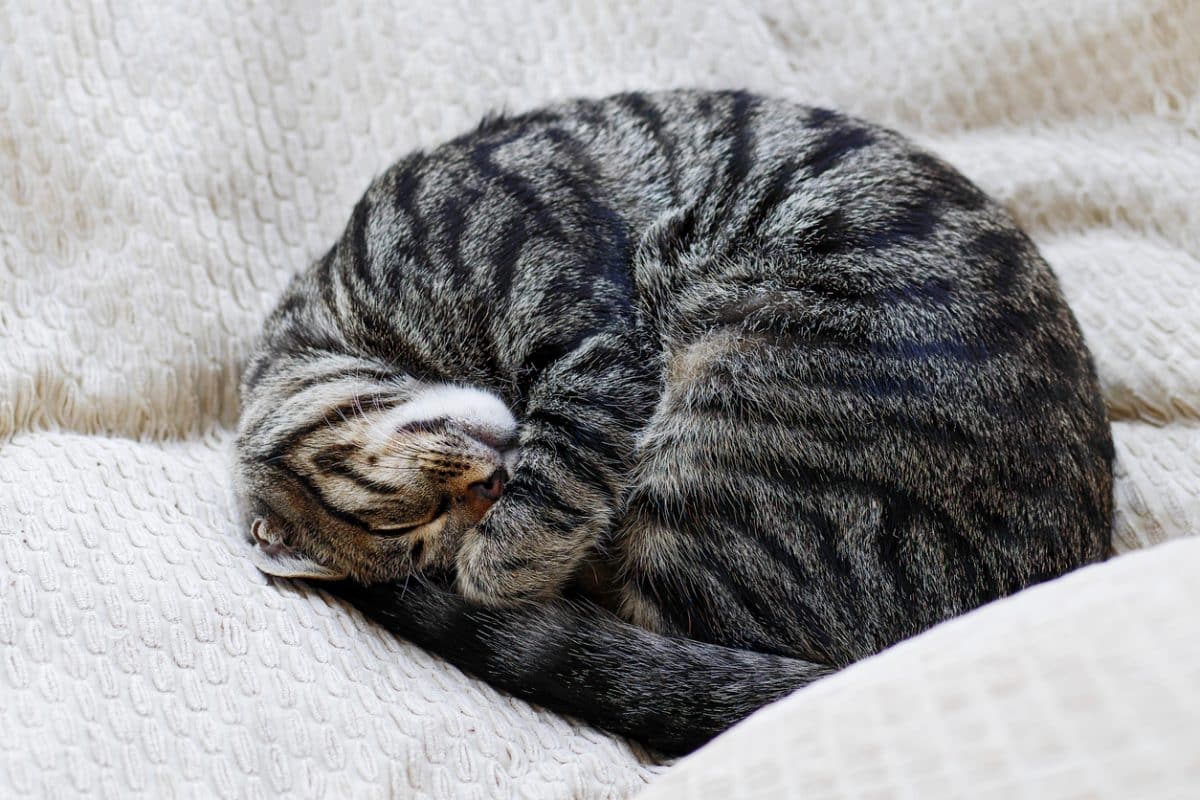
iStock/asadykov
How Cold Is Too Cold for Cats?
Temperatures below the mid 40s are generally considered unsafe for prolonged exposure for cats, says Dr. Rebecca Greenstein, of Rover’s expert Pet People Panel.
“If you have an indoor-outdoor cat, be wary of temperatures lower than 45°F. It’s best to keep them inside during very cold weather.”
How Do I Know My Cat Is Cold?
“Since cats tend to hide their discomfort, you’ll need to be extra observant to detect signs that your cat is cold,” Greenstein says.
While cats are very good at getting cozy, cats who are particularly cold may exhibit some of these other behaviors:
- Snoozing on direct heat sources: If you catch your cat routinely heading to the radiator for their midday siesta, you can bet they’re trying to boost their body temperature.
- Curling into a ball: While this could just be one of your cat’s go-to sleeping positions, sometimes it’s a clue that they’re too cold. A cold cat will tuck their paws and tail beneath their body to preserve heat
- Always wants to cuddle: If your cat is permanently fixed to your lap, it’s fair to say they’re trying to get warm. In a multi-cat household, your kitties may also huddle or sleep together for warmth.
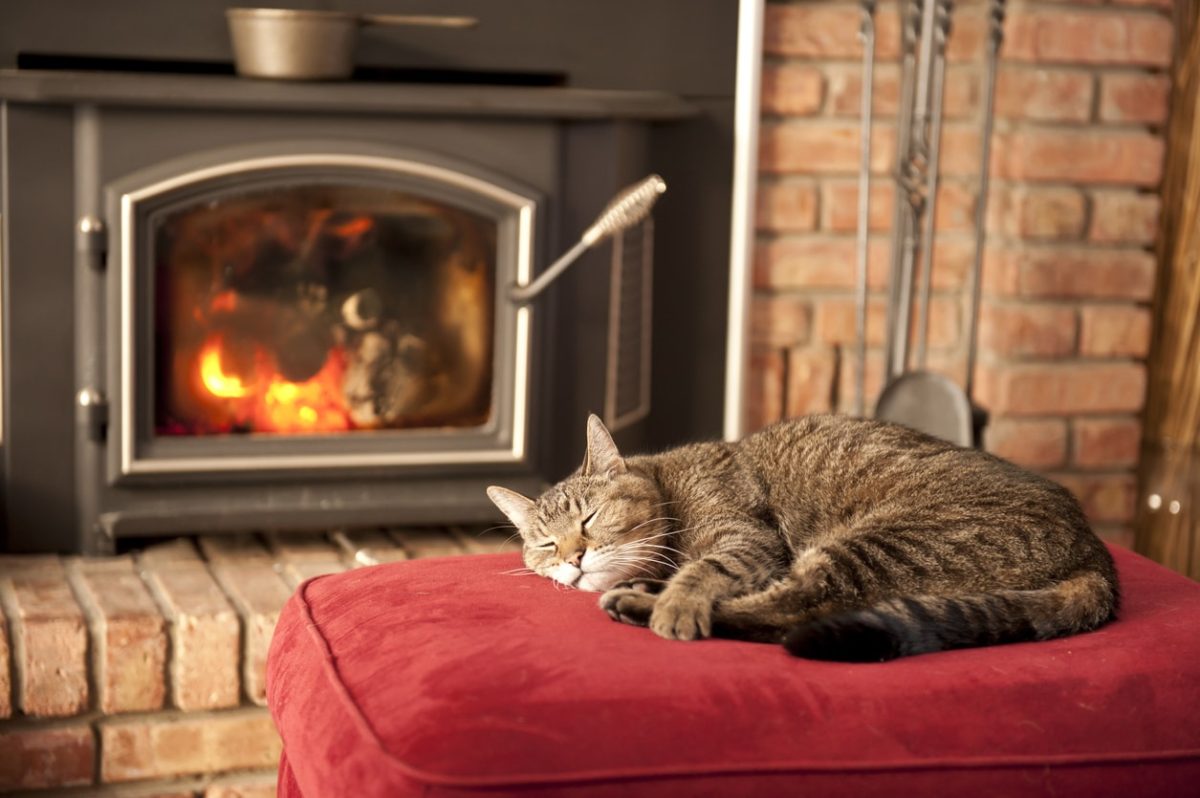
iStock/Westhoff
Does My Cat Have Hypothermia?
Hypothermia occurs when a cat’s body temperature dips too low. This dip in their internal temperature can cause dangerous complications, like a drop in heart rate, high blood sugar, or impaired liver function. It can even lead to death if left untreated. So, it’s crucial to stay vigilant if you suspect your cat may be at risk of becoming overly cold.
What causes hypothermia in cats?
There are two different types of hypothermia in pets: primary and secondary. Primary hypothermia happens as a result of prolonged exposure to cold temperatures, such as spending too long outdoors on a snowy day below freezing. Secondary hypothermia occurs as a symptom of an illness, a side effect of a medication, or sometimes, when a cat goes under anesthesia.
What are the signs of hypothermia in cats?
“Symptoms can include lethargy, shivering, palpably cold extremities [such as ears and paws], slowed breathing or heart rate, or even collapse,” says Greenstein. “Any of these signs warrant a trip to the vet for immediate treatment.”
How to treat hypothermia in cats
The best way to treat hypothermia in cats is prevention—keep an eye on your cat and take the necessary, common sense steps to ensure it doesn’t happen in the first place.
In the event that your cat is hypothermic, as Greenstein notes above, their best chance at survival is at the vet. Vets typically treat hypothermia by gradually rewarming your cat with tools like thermal blankets, infrared lights, or even IV fluids.
Even mild cases of hypothermia warrant vet attention. If you’re trying to keep your cat warm on the trip there, a fleece blanket or towel gently warmed in the dryer, or with a water bottle, could help them preserve body heat. Use extreme caution, and only the lowest setting, when using an electric blanket or heating pad as it could burn or induce shock in your pet.
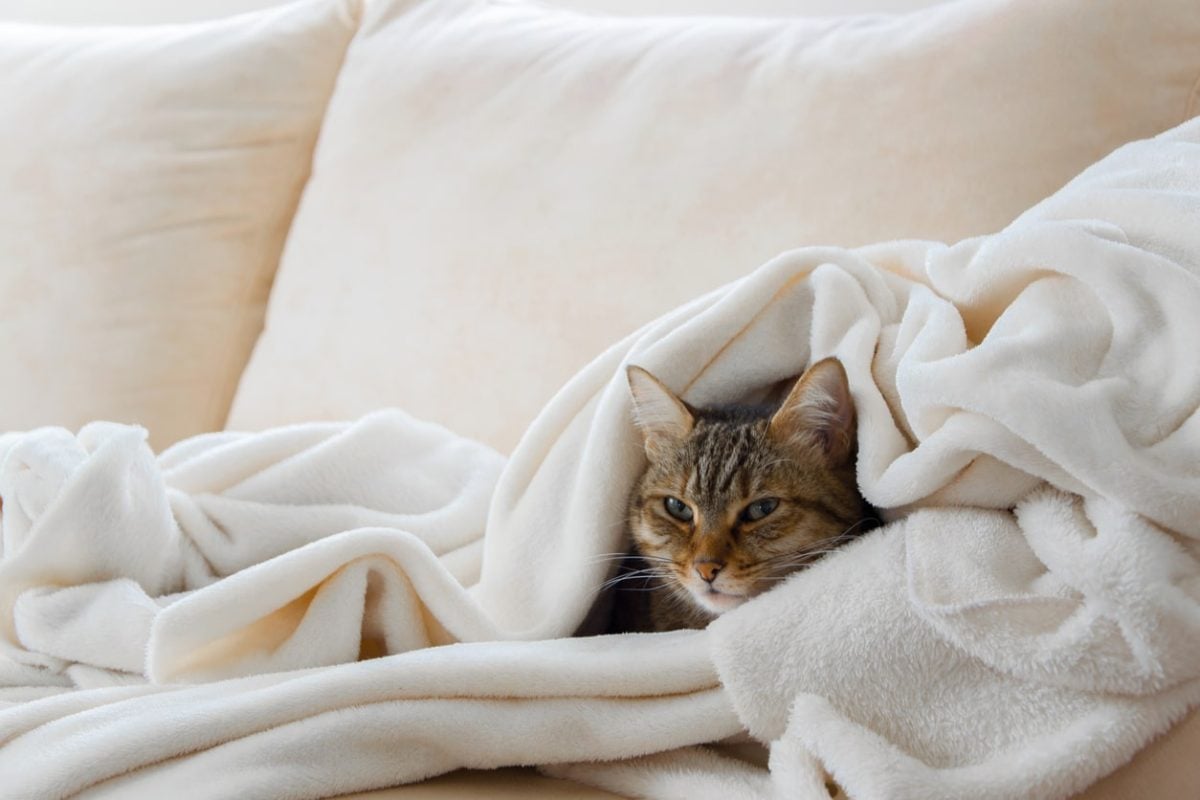
iStock/Alikaj2582
How to Keep Cats Warm in Winter
The best way to prevent hypothermia in your cat is to keep them warm and protected from the cold. The following tips may come in handy to help them stay toasty.
- Monitor temps and keep cats inside. If your cat is young, old, or sick, keep them indoors-only if the outdoor thermometer dips below 45°F. Other indoor-outdoor kitties should have a way to come inside when they want.
- Offer a blanket (or two or three.) Flannel, fleece, or sherpa are prime blanket materials for kitties to burrow in. And as cute as it sounds, please don’t roll your cat into a blanket burrito. Most cats hate being restrained.
- Try a heated bed. Choices abound here: Think donut-shaped pet beds, semi-enclosed beds, self-warming beds, and traditional pet beds. Any bed with a removable cover for easy washing is a plus.
- Elevate your cat’s bed. Since heat rises, your cat will stay warmer at a higher level. Make sure to position the bed on a level surface.
- Try a sweater. If your cat will tolerate wearing clothes, they may benefit from the cozy embrace of a sweater or jacket. Just make sure that the sweater is sized appropriately, and not too big or too small.
- Let the sun in. We can all conjure the image of a cat sunbathing blissfully near a window. Open your curtains during the day so your cat can enjoy the extra warmth.
- Extra playtime. Set aside time every day for some interactive fun with your kitty, like a session with the laser pointer or a wand toy. These activities can boost their body temperature and strengthen your bond.
- Share your bed. As long as it doesn’t interfere with your own sleep, consider letting your cat snuggle up to you in bed for extra warmth.
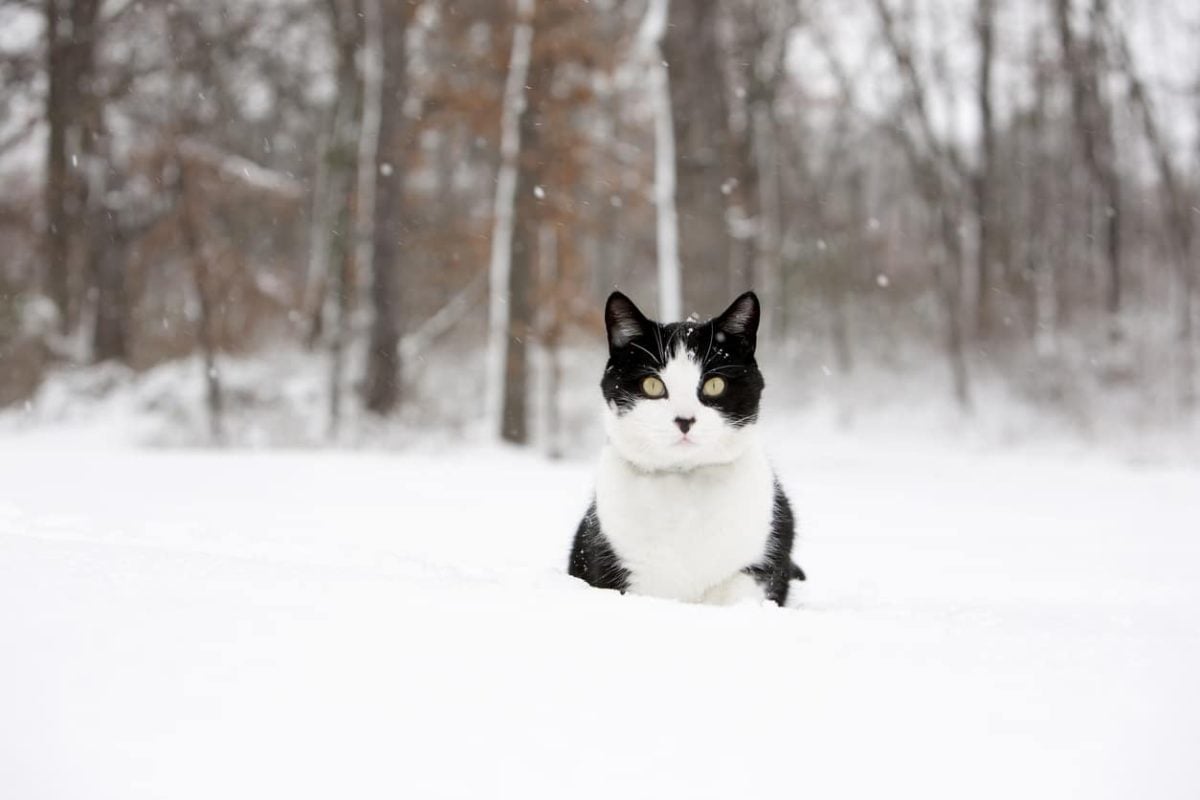
iStock/jygallery
How to Help Outdoor Cats Stay Warm in Winter
Of course, not all cats have the luxury of coming inside in the winter, like strays, feral (or “community”) kitties, or working barn cats. But if you want to help the outdoor cats in your neighborhood stay safe and protected from the cold, try setting up an outdoor cat house or insulated shelter.
The vets at Texas A&M University recommend an insulated structure with enough room for each cat to curl up and maintain their body heat. A plastic flap can also go a long way toward keeping warmth in (though you may have to train the kitties how to use it, with enticements such as treats or catnip). If you have a garage, shed, or barn that’s dry and sheltered from the wind, rain, and snow, you can also put in a cat door and set up some cat beds or wool caves away from any drafty or wet areas to let the kitties find a cozy spot to snuggle up.
More tips to help outdoor kitties include:
- Providing extra insulation. To give your outdoor cat house an extra layer of warmth, experts recommend using a bed of straw, as blankets can get wet and freeze and make cold cats even colder. Just remember to change the bedding regularly to keep it clean and enticing to cats.
- Using heated bowls. Pets still need access to fresh water in the winter. If it’s below freezing, try using an outdoor-rated heated bowl to keep drinking water at sippable temperatures.
- When possible, avoiding antifreeze. If you’re using chemical products like antifreeze, make sure to clean up any spills on your driveway, and keep it out of reach of cats who may be in your garage or shed. It can be deadly to cats, even in small doses. If you have an indoor-outdoor cat, you may also want to wipe them down after they come inside, so they don’t lick it off their fur or paws.
Final Thoughts
Winter is prime season for cuddling up on the couch—that’s true for people and cats! Just remember: if it’s too cold for you, it’s probably too cold for your cat. But with a few simple safety preparations, your cat can stay safe and cozy all season long
